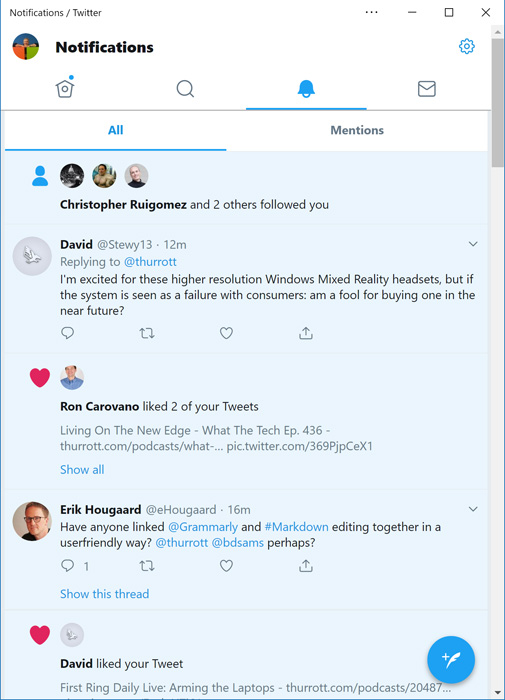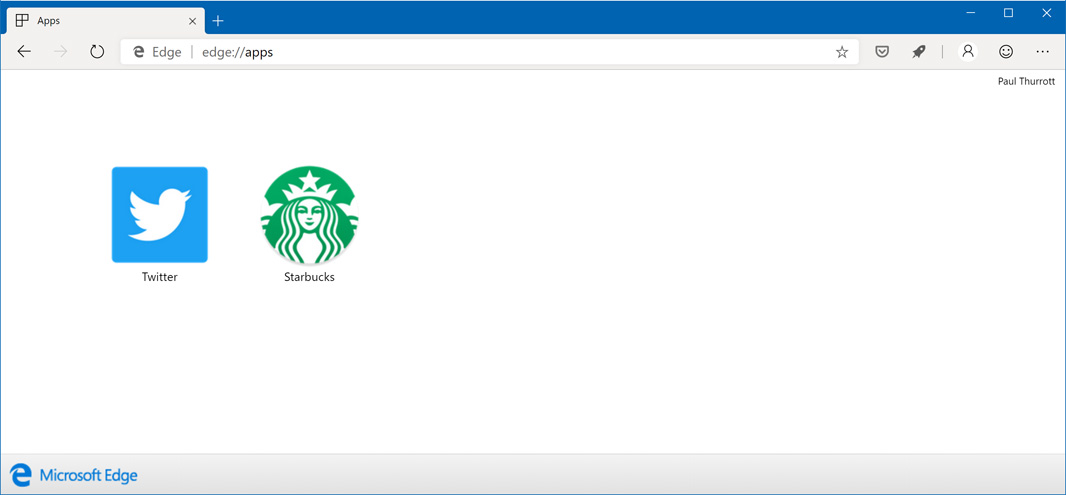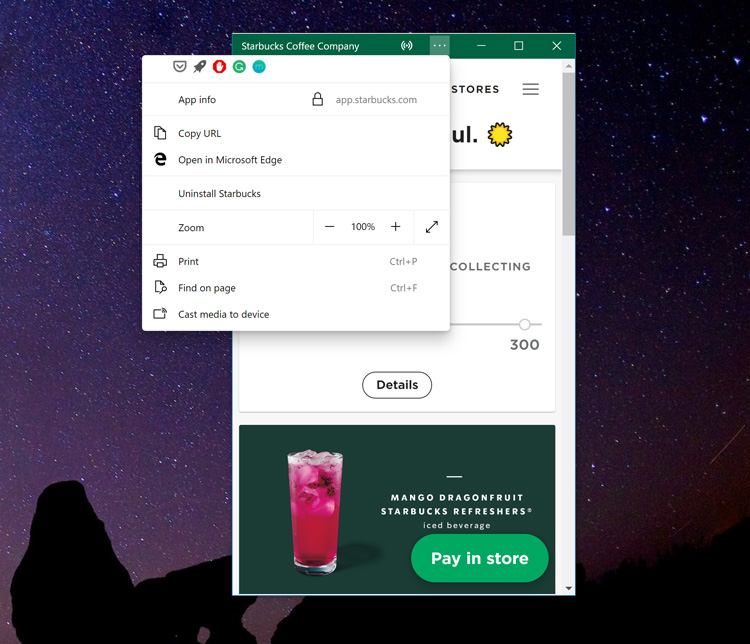Living on the (New) Edge: Web Apps
- Paul Thurrott
- Apr 13, 2019
-
21

In the new Microsoft Edge, PWAs, other web apps, and web pages of any kind can be used like native Windows applications. This is a huge improvement over the similar but much less sophisticated functionality in classic Edge, and it will have a profound impact on Windows 10, as well as a coming “Lite” derivate that will enable so-called “Edgebook” laptops. As such, the new Edge’s support for web apps is inarguably this browser’s single most important feature and is, in fact, the core reason that Microsoft moved Edge to the Chromium code-base.
This isn’t really the place to get into a lengthy discussion of the underlying differences in web app support between classic Edge and the new Edge. But you can think of it this way: Where classic Edge relied on the Microsoft Store for web app acquisition and only offered half-baked support for “pinning” web pages, the new Edge handles web app and web page acquisition itself, and it treats both similarly. In the future, my expectation is that Microsoft will support both Store- and web-based models in the new Edge.
Windows Intelligence In Your Inbox
Sign up for our new free newsletter to get three time-saving tips each Friday — and get free copies of Paul Thurrott's Windows 11 and Windows 10 Field Guides (normally $9.99) as a special welcome gift!
"*" indicates required fields
Put another way, support for web apps (and for treating any web page as an app-like entity) more closely mimics how this functionality works in Google Chrome than it does classic Edge. This is common to many new Edge features, of course.
Today, classic Edge offers no way to find Progressive Web Apps (PWAs) or other web apps. Instead, they’re found in the Microsoft Store alongside Universal Windows Platform (UWP) apps, Desktop Bridge apps, and other Store apps. They’re not identified as web apps in any way, nor is there is a way to browse or search the Store for web apps. (This was likely done for a good reason, as normal users should never need to worry about “how” an app was created.)
If you navigate to a real PWA on the web using classic Edge, like Twitter, the browser will in no way identify it as a web app, treat it differently than any other web page, or prompt you to install it. If you use classic Edge’s laughably-bad taskbar-pinning capabilities, you will see the app/page correctly identified on the taskbar using the site’s favicon. But when you launch this shortcut, the underlying app/page simply loads in a classic Edge tab, not in its own window.
The new Edge works quite differently.
When you navigate to a real PWA on the web using the new Edge, like Twitter, the browser indicates that this app can be installed on your PC using an Install (“+”) icon in the address bar.

When you select this icon, you’re prompted to install the web app.

Click Install and then the web app will appear in its own window, which is really another new Edge window even though it lacks the “chrome” (user interfaces) found in a normal web browser window. In this, the web app looks and feels more like a native app.

Which, in Windows 10, it is.
This web app has its own taskbar icon, of course, and you can pin it there like any other app. Unlike with classic Edge, this app will launch in its own window when selected.

It will also appear in the Start menu’s All Apps list, under both the Recently Added group at the top and the new Edge apps folder (which appears as Edge Canary or Edge Dev today during the pre-release phase).

You can manage the app from the Start menu if you’d like. For example, you can right-click its Start icon and choose “Uninstall” to uninstall it from your PC.
But you can also manage this and any other installed web app using the new Edge’s app interface, which can be found by navigating to edge://apps.

Here, you’ll see each web app you’ve installed, and if you right-click one of the app icons, you’ll find some useful app management options, including:
Remove. The equivalent of right-clicking it in the Start menu and choosing “Uninstall.”
Open as window. This is selected by default, but if you un-select it, the app will run in a normal new Edge browser tab instead.
App info. Here, you can link to the app’s permissions in Edge settings > Site permissions and decide how permissions for your location, PC hardware, web technologies, sync, and more works.
Additionally, each web app window provides a Customize and control menu (“…”) in its titlebar that can be used to access various app and web browser options.

The new Edge can also treat any web page similarly to a real web app. For example, if you want to access a frequently-visited site as if it were a standalone web app, you can navigate to it in the new Edge and then select Settings and more > More tools > Pin to desktop. Then, choose a name (by default, the name chosen by the site owner).
Web pages that are pinned like this behave much like true web apps. They appear in the Start menu, like web apps. They can be pinned to the taskbar. They appear in edge://apps alongside true web apps. And if you configure one here to open as a window, it will look and feel like a real web app, too, though it won’t support native web app features like offline use, or provide a custom title bar.

What’s not clear is how/when Microsoft will bring the new Edge and its support for web apps to the Microsoft Store. My guess is that app developers will be able to choose which Edge rendering engine to use—classic or new—and that their apps will run accordingly, without the user needing to worry about it. And that, over time, more and more developers will choose the new Edge because it is more sophisticated.
But in the meantime, the new Edge’s support for web apps—and web pages that work like apps—works wonderfully and can be enjoyed immediately by those in the Edge Insider Program.
Conversation 21 comments
-
dontbe evil
<blockquote><em><a href="#420343">In reply to andrewtgalloway:</a></em></blockquote><p>classic Edge IS MODERN and from MS</p>
-
dontbe evil
<blockquote><em><a href="#420462">In reply to BoItmanLives:</a></em></blockquote><p>just search on internet</p>
-
Stooks
<blockquote><em><a href="#420352">In reply to Jules_Wombat:</a></em></blockquote><p>Never goin to happen. </p>